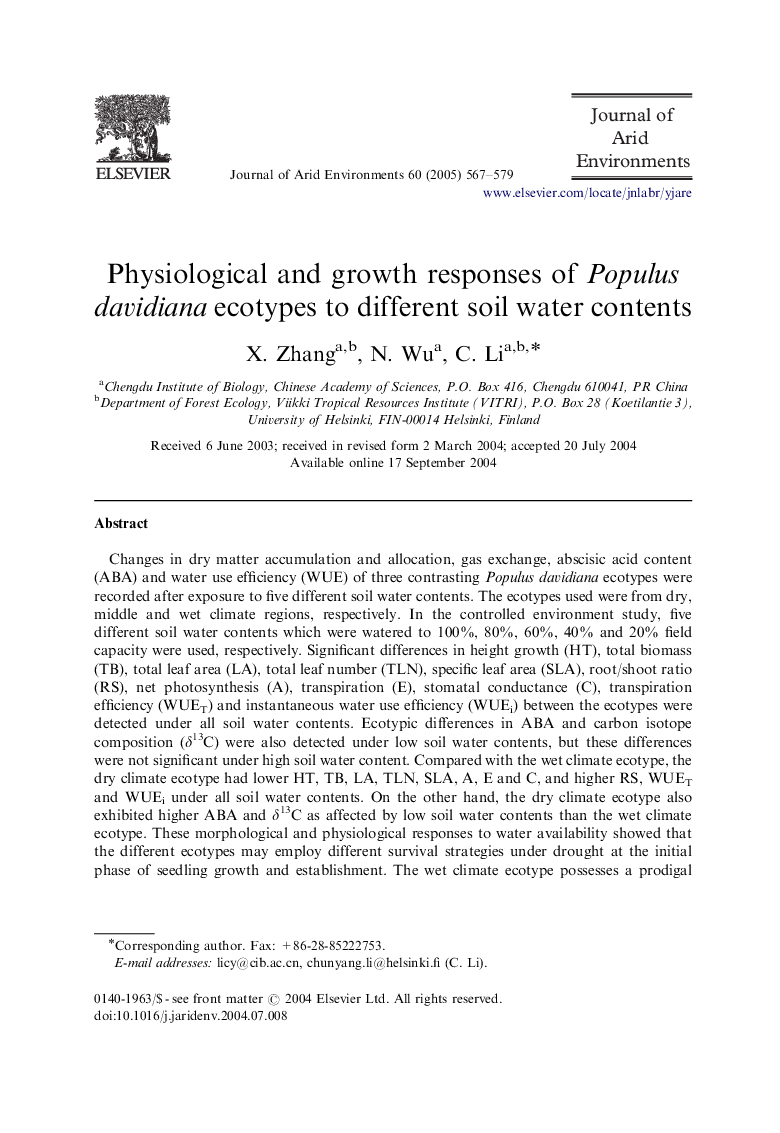| Article ID | Journal | Published Year | Pages | File Type |
|---|---|---|---|---|
| 9447948 | Journal of Arid Environments | 2005 | 13 Pages |
Abstract
Changes in dry matter accumulation and allocation, gas exchange, abscisic acid content (ABA) and water use efficiency (WUE) of three contrasting Populus davidiana ecotypes were recorded after exposure to five different soil water contents. The ecotypes used were from dry, middle and wet climate regions, respectively. In the controlled environment study, five different soil water contents which were watered to 100%, 80%, 60%, 40% and 20% field capacity were used, respectively. Significant differences in height growth (HT), total biomass (TB), total leaf area (LA), total leaf number (TLN), specific leaf area (SLA), root/shoot ratio (RS), net photosynthesis (A), transpiration (E), stomatal conductance (C), transpiration efficiency (WUET) and instantaneous water use efficiency (WUEi) between the ecotypes were detected under all soil water contents. Ecotypic differences in ABA and carbon isotope composition (δ13C) were also detected under low soil water contents, but these differences were not significant under high soil water content. Compared with the wet climate ecotype, the dry climate ecotype had lower HT, TB, LA, TLN, SLA, A, E and C, and higher RS, WUET and WUEi under all soil water contents. On the other hand, the dry climate ecotype also exhibited higher ABA and δ13C as affected by low soil water contents than the wet climate ecotype. These morphological and physiological responses to water availability showed that the different ecotypes may employ different survival strategies under drought at the initial phase of seedling growth and establishment. The wet climate ecotype possesses a prodigal water use strategy and quick growth, while the dry climate ecotype exhibits a conservative water use strategies and slow growth.
Related Topics
Physical Sciences and Engineering
Earth and Planetary Sciences
Earth-Surface Processes
Authors
X. Zhang, N. Wu, C. Li,
